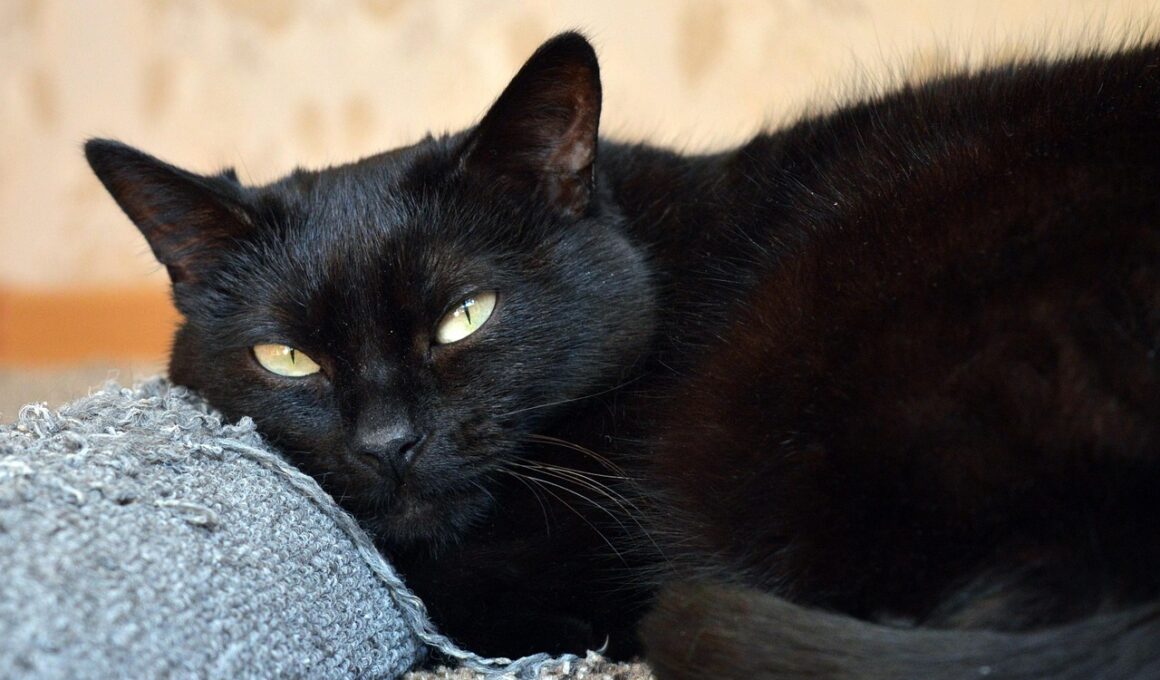How to Teach Cats to Use Scratching Posts Instead of Furniture
Understanding why your cat scratches is the first step toward effective training. Cats have a natural instinct to scratch, which helps them maintain healthy claws, stretch, and mark territory. It’s crucial to recognize that scratching is a normal behavior, not a sign of mischief. Choose a scratching post that fits your cat’s preferences; options include vertical, horizontal, or angled designs. Observe your cat’s scratching habits to determine what style they prefer. Place the scratching post in areas where they frequently scratch furniture, reducing the temptation to claw your sofa. Additionally, consider the texture and material of the scratching post, as many cats prefer sisal, cardboard, or carpet. Providing a variety of post types can cater to your cat’s individual tastes, making the transition easier. Regularly reward your cat with praise or treats when they use the scratching post, reinforcing the positive behavior. Be patient, as training may take time. Consistency is the key here; ensure that you redirect their scratching toward the post each time they try to scratch your furniture. Use a firm voice without scolding to guide them effectively.
Using deterrents can also help in this training process. If your cat continues scratching the furniture, consider using double-sided tape, which is unpleasant on their paws, or a commercial cat repellent spray that discourages them from that area. Make sure to reward your cat for using appropriate scratching surfaces, creating positive associations with their scratching post. You can also use catnip, a favorite among many felines, sprinkling it on the scratching post to attract their attention. Experiment with different placements of the post to find the most appealing position for your cat’s use. It may take a couple of tries. Encourage family members to support the training process by being consistent in redirecting the cat’s behavior. Also, remember that some cats may feel more comfortable scratching when they have visual privacy, so consider placing the post in a corner or near their favorite resting spot. Keep an eye on their behavior, ensuring they feel safe while exercising this behavior. Moreover, be patient, as habit changes may take some time. With persistence, you can help your cat refocus their scratching appropriately, preserving your furniture.
Incorporating Playtime to Distract
Incorporating regular playtime into your cat’s routine can also aid in reducing furniture scratching. Engage your cat with interactive toys like feather wands or laser pointers, providing the mental and physical stimulation they need. This distraction can significantly decrease the behavior, redirecting their energy to play instead of destructiveness. Gradually, your cat will associate play with enjoyable experiences, fostering a more positive environment. Use playtime as a tool to teach them that scratching the post can result in fun rewards. When they scratch appropriately, involve them in play, making the scratching post a central feature of their activities. Make sure play sessions are frequent and varied to keep their interest alive. Social interactions with their owners are essential for their happiness. Ensure they have opportunities to scratch appropriately at least a few times a day. This simultaneous scratching could fulfill their needs for claw maintenance and combined with play will enhance their overall well-being. If desirable behaviors occur, ensure to reward consistent efforts with treats or affection, reinforcing that scratching posts lead to happiness. With time, your cat will associate their scratching post with positive reinforcement, minimizing furniture damage.
Understanding your cat’s individual personality is vital in this training process. Cats, much like humans, can exhibit distinct preferences and behaviors. Some are naturally more inquisitive, while others may be shy or reserved. Observe how your cat reacts to different scratching post surfaces and heights. A boisterous cat might require a sturdy, tall post, while a quieter one might prefer something shorter or closer to the ground. Providing a range of options can increase the chances of success—different posts can cater to each cat’s unique scratching style. This approach helps your cat feel more satisfied and fulfilled. By understanding their behaviors, you can better troubleshoot issues as they arise. If your cat appears stressed or uninterested in using the post, try repositioning it or changing the type. Mixing up the environment can provide some stimulation and encourage them to utilize their scratching post. Additionally, spending more time with your cat while they scratch can lead to more engaged and satisfied behaviors over time. Ensuring your cat knows they are loved can significantly decrease anxiety, helping them feel more comfortable exploring their designated scratching area.
Addressing Aggressive Scratching
If your cat’s scratching becomes aggressive or attached to specific items, it’s essential to assess the situation. Look for stressors in the environment, such as loud noises, changes in routine, or unfamiliar animals. Stress can trigger unwanted scratching behaviors. Address any underlying anxieties by providing cozy hiding spots, elevated spaces, or pheromone sprays designed to soothe your cat. Keep the environment calm by minimizing disruptive elements, which can help alleviate stress. Consult with a veterinarian if the aggressive scratching persists, as they can suggest behavioral therapy or other effective solutions. Providing an alternate release for energy through play can reduce frustration. It’s crucial to approach the issue positively, avoiding scolding, as negative reinforcement may exacerbate stress and anxiety. Focus on redirecting their energy. Regular social interaction and environmental enrichment can also enhance your cat’s mood and willingness to engage with their scratching post. Being observant of your cat’s behavior patterns will guide you in identifying triggers. By addressing anxiety causes, you can help your cat become more comfortable and shift any aggressive scratching to more appropriate outlets.
Persistence and consistency in your approach will lead to successful training over time. Cats are creatures of habit; forming an understanding takes patience. Revisit your training methods occasionally and adjust them according to your cat’s preferences and reactions. Small changes in the setup might grab their attention more effectively. Consider incorporating positive reinforcements like treats or extra affection when they show interest in their designated scratching areas. Remember to clean any marked furniture with an enzyme cleaner to eliminate scents, reducing their attraction to those areas. Having designated play areas near the scratching post may further encourage usage, ensuring they become familiar with the concept. Take the time to celebrate the little victories along the way, such as moments when they choose the scratching post over your furniture. As they start to recognize their scratching post, you may gradually notice that they care less about clawing your furnishings. Reinforcing positive interactions with rewards will ensure continual encouragement. Consequently, both your relationship with your cat and the condition of your furniture will improve markedly, resulting in a happier living environment for both you and your beloved pet.
Creating a Scratch-Friendly Home
Lastly, creating a scratch-friendly environment is vital in ensuring your cat’s happiness. Ensure that their scratching posts are accessible, inviting, and easily located within your home. Place them near furniture they frequently scratch or areas they frequently inhabit. A well-placed scratching post becomes an integral part of their territory. Consider adding additional posts in various rooms to cater to their roaming habits, supporting their natural need to scratch. These additional posts will ensure they enjoy a versatile experience, allowing them to scratch wherever they feel comfortable. Keeping their environment fulfilling not only serves their scratching instinct but improves their overall mental stimulation. Incorporate other cat-appropriate items such as climbing structures or cozy blankets. This variety increases their interest and helps reinforce that their scratching posts are exciting, not just another chore. By observing your cat’s scratching habits, you can maintain a harmonious atmosphere. Implementing these strategies will greatly reduce furniture damage, enhance their scratching behavior, and support their essential natural instincts. A balanced living space fosters a happy, well-adjusted cat, allowing you to enjoy your furniture while они enjoy their designated spaces.
In conclusion, teaching your cat to use scratching posts instead of your furniture can be achieved through patience, understanding, and consistency. By recognizing what triggers their scratching behavior, enhancing their environment, and building positive associations, you can successfully train them to redirect their intentions appropriately. Regular play and a well-structured home setup encourage their natural instincts while simultaneously preserving your furniture. Remember that every cat is unique, and varying strategies may be needed to suit their personality. By experimenting with several techniques and making the process rewarding, your cat will learn that the scratching posts offer a beneficial outlet for their instincts. Moreover, maintaining a supportive and loving atmosphere will improve your bond with your cat. Your persistence will yield significant results, ensuring that both your furniture and your relationship with your pet remain intact. Celebrate their progress and continue to nurture their scratching habits with positive reinforcement. Following these steps will pave the way toward a well-trained cat that respects your living space while fulfilling their natural scratching needs.


